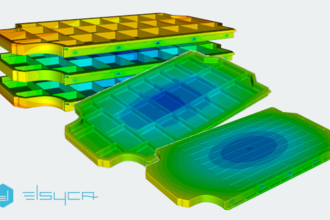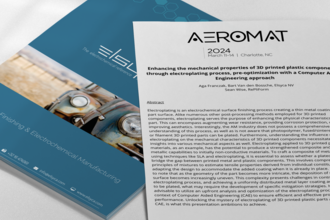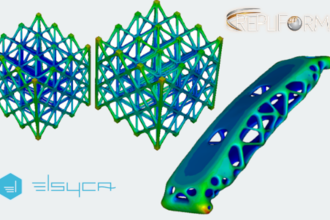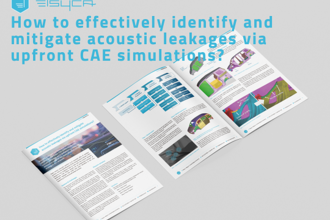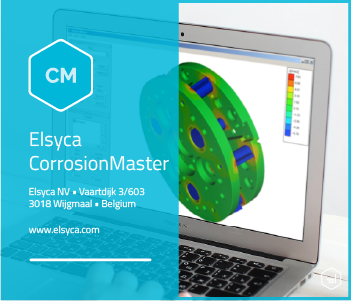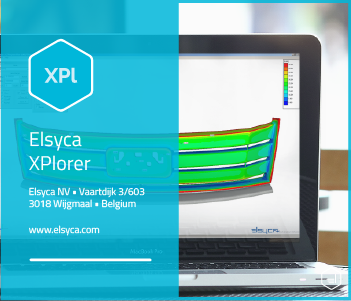
Elsyca LeakageMaster
Improve vehicles interior acoustic comfort by performing upfront virtual smoke tests
More infoDownload file
Everything you need for air-borne noise analysis
An interactive tool for the Acoustic Engineer to identify acoustics leakage paths, automatically create plugs and custom sealants, easily manipulate the model and verify the effect of sealing measures on the acoustic leakage.
Due to the ever increasing complexity of the body-in-white (BIW), it is a very challenging exercise to understand how noise propagates through the labyrinth of the vehicle’s structure. Today, acoustic engineers perform ultrasound or smoke tests to identify these noise paths. However, this is only feasible late in the development process once prototypes are available, and moreover, the physical tests do not tell anything about the actual trajectory of these noise paths nor how to block them in the optimal way.
Elsyca LeakageMaster solves these issues: starting from a computer model of the BIW, the acoustic paths are identified including the full route details through the reinforcement structures. Based on this information, the engineer can interactively choose between a variety of sealing measures, and validate the acoustic performance.
Key Benefits
Increase your insight
Much more efficient than only knowing where noise exits your vehicle is to also visualize how noise actually travels through each cavity of your vehicle.
Make better decisions
Optimizing the acoustic sealing can now be done early on in the design process! The availability of a prototype is no longer a limiting factor. Use prototypes for validation rather than optimization.
Improve quality
Eliminate guesswork. Virtual simulation allows an unlimited number of iterations to further improve the acoustic comfort. Fine-tune the amount and location of sealing measures, unhindered by prototype availability.
Save time and cost
Profit from all the benefits of virtual simulation rather than relying purely on physical trials such as smoke or ultra-sound tests. Virtual simulation is not only fast, flexible and inexpensive, it is also so much more effective!
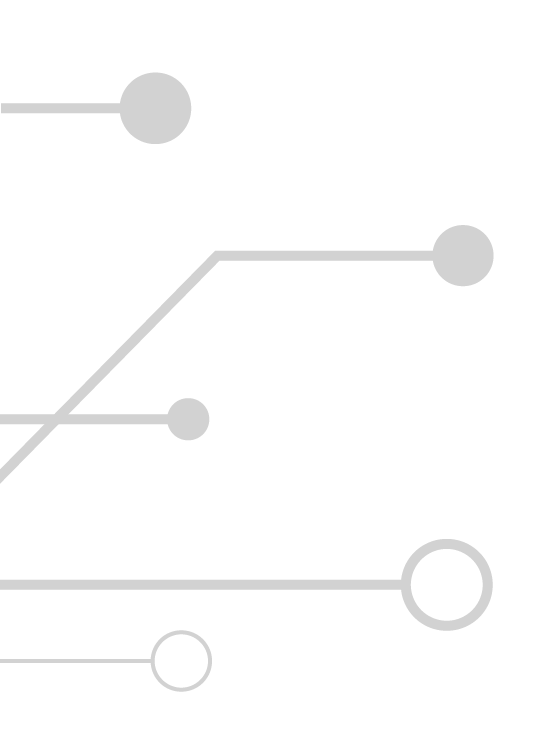
Key features
A wide range of functionalities

Import and prepare your model in just a few clicks
Simply export your model from your favorite CAD platform and import the STL files into Elsyca LeakageMaster. It is indeed as simple as that!

Isolate zones of interest with clipping tools
Organizing and subdividing a body-in-white is quick and easy with the embedded pre-processing tools. All meshing happens automatically in the background, no meshing skills are required.

Generate acoustic plugs automatically in seconds
Intelligent algorithms identify the holes in the metal sheets and generate corresponding plugs. In this way, hundreds of plugs are made available to the model in just a few seconds, and can be activated at any point in time at the user’s discretion.

Create custom sealants with our extensive toolset
A wide variety of sealing measures allow to create custom sealants, such as glue lines, localized patches or cavity shaped baffles.

Activate and deactivate plugs and sealants
User defined source and receiver locations allow to investigate a variety of scenarios. Run iterative simulations to mitigate the acoustic leakage by (de-)activating plugs and sealants in the model.

Inspect trajectories of noise propagation
Discover how acoustic leakage travels through the BIW structure with the help of intelligent visualization tools. Design your in-house criterion based on path-specific information to rate the leakage performance.

Browse through simulation results
Per project a comprehensive summary of all simulations provides a status overview, facilitating selection of the best performing configuration.

Share your conclusions with others
Acoustic paths and the corresponding sealing measures can be exported to any CAD system to share your conclusions with your team or other departments.
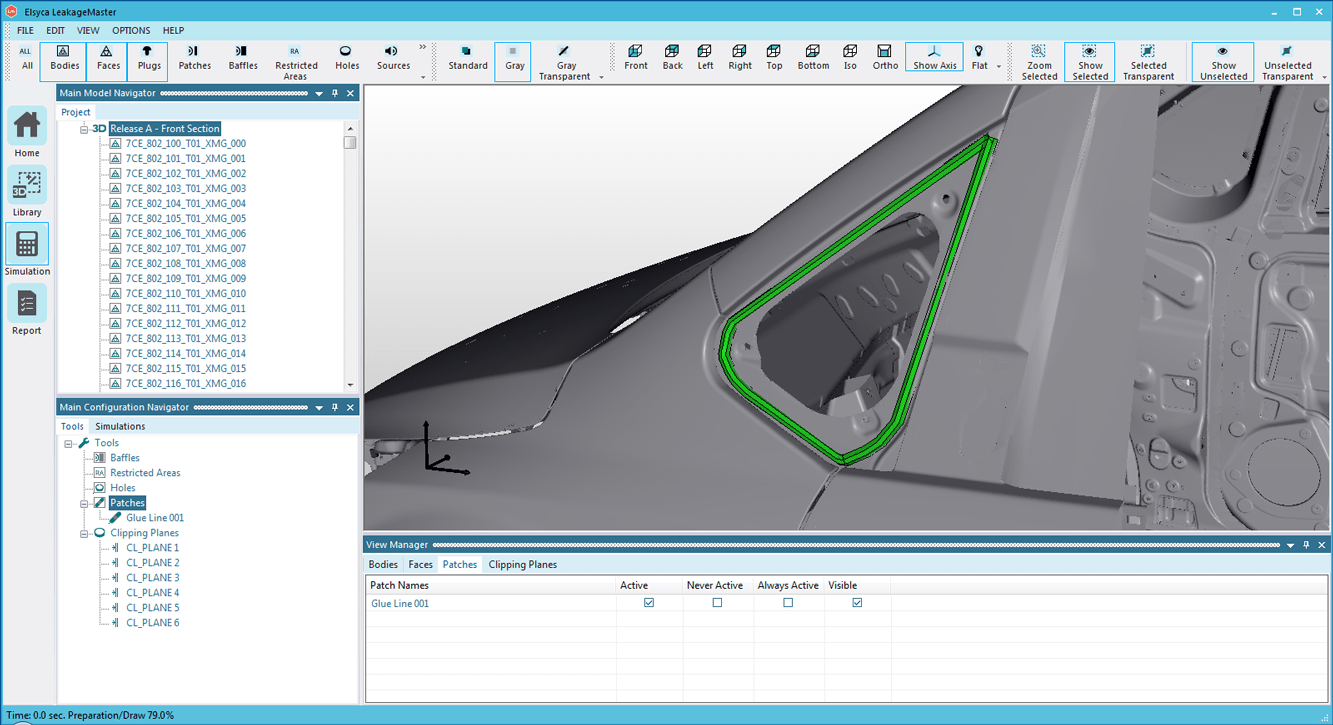


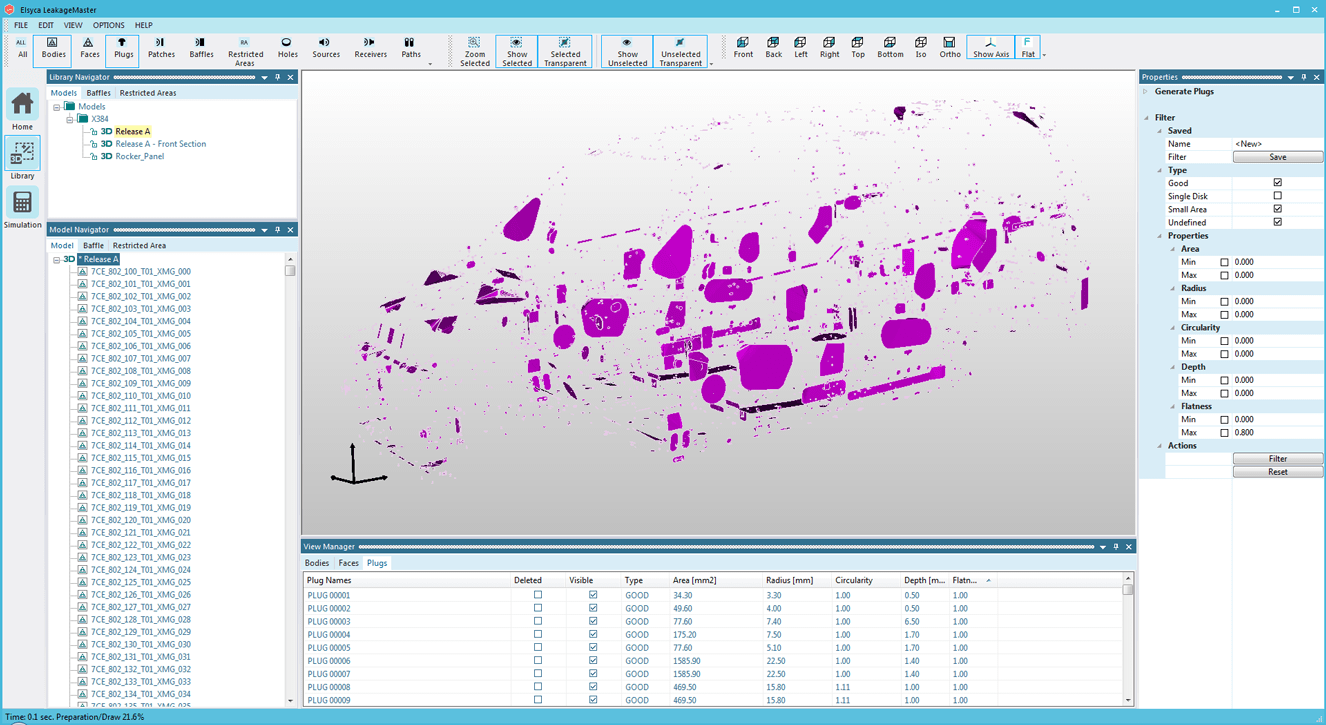
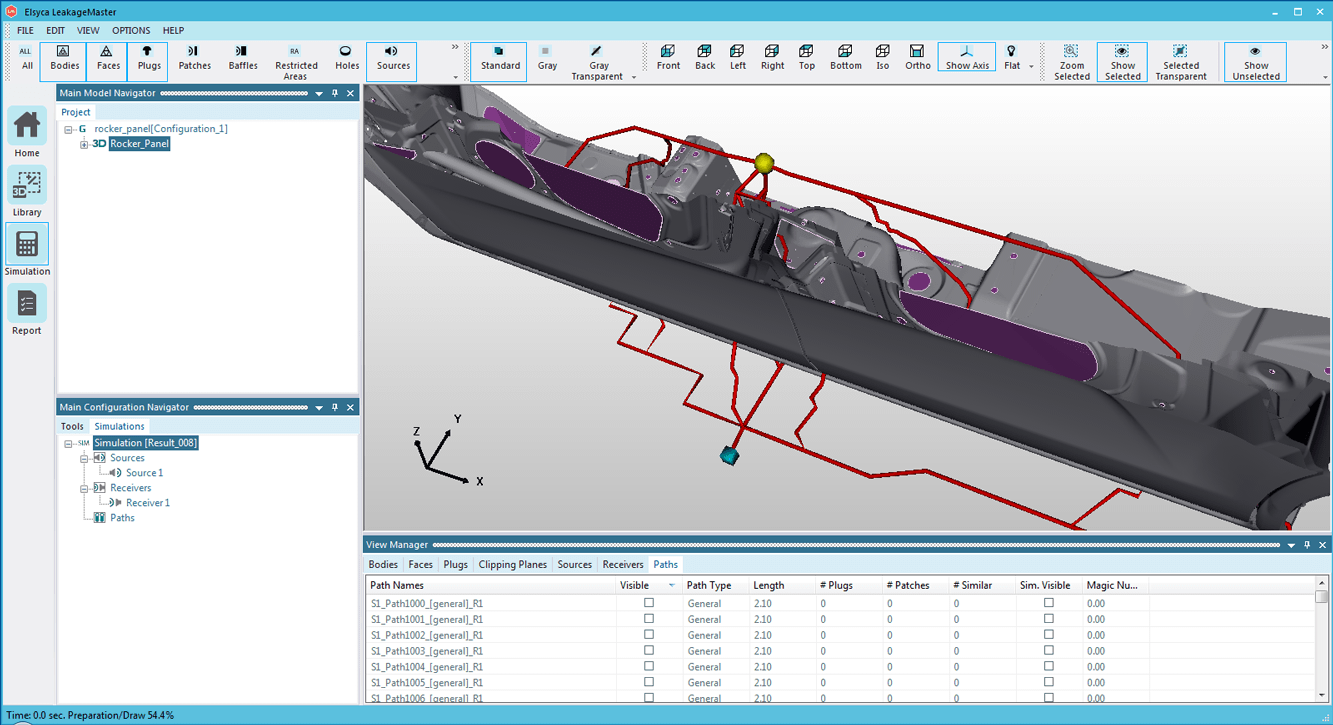
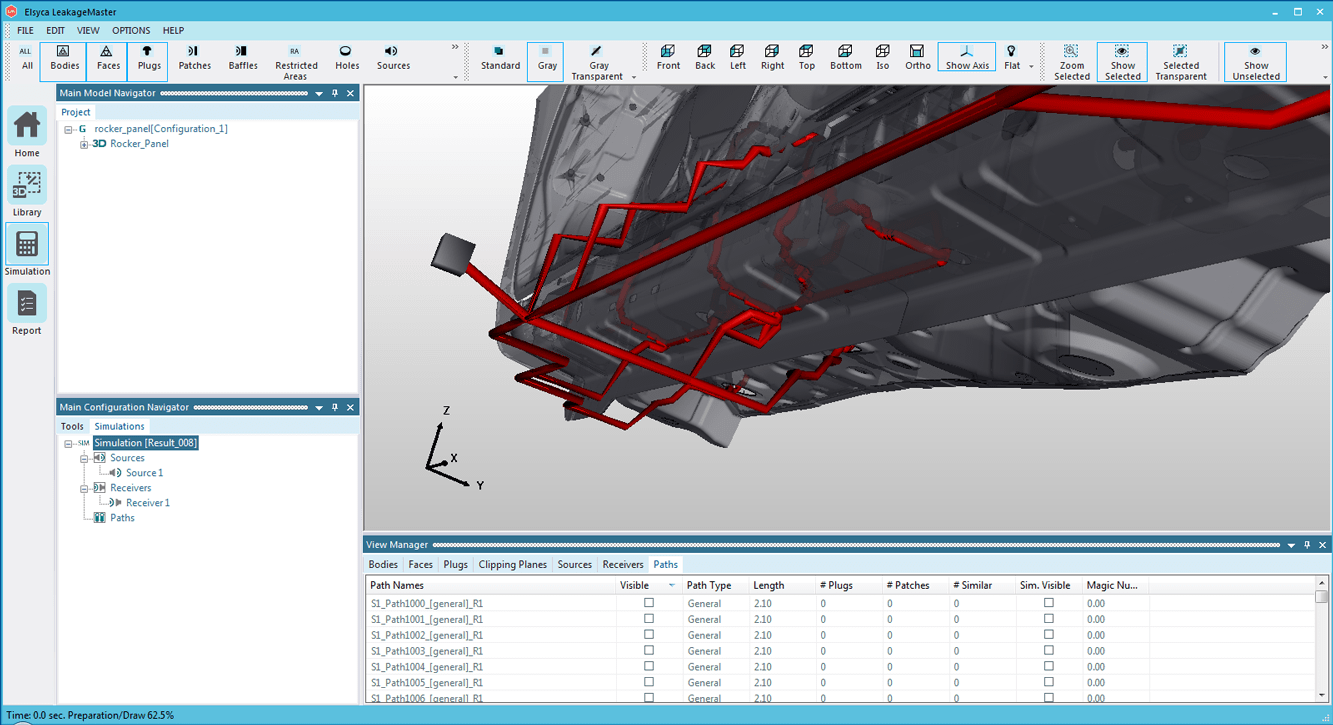
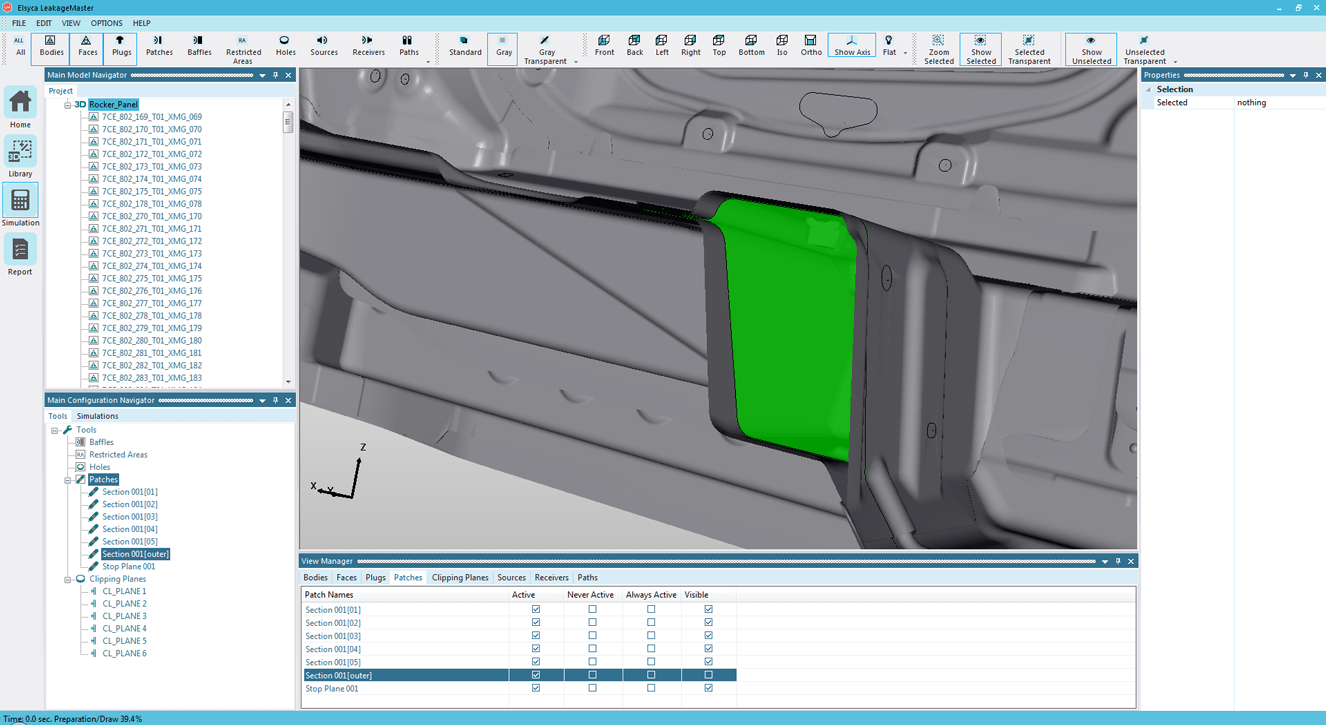
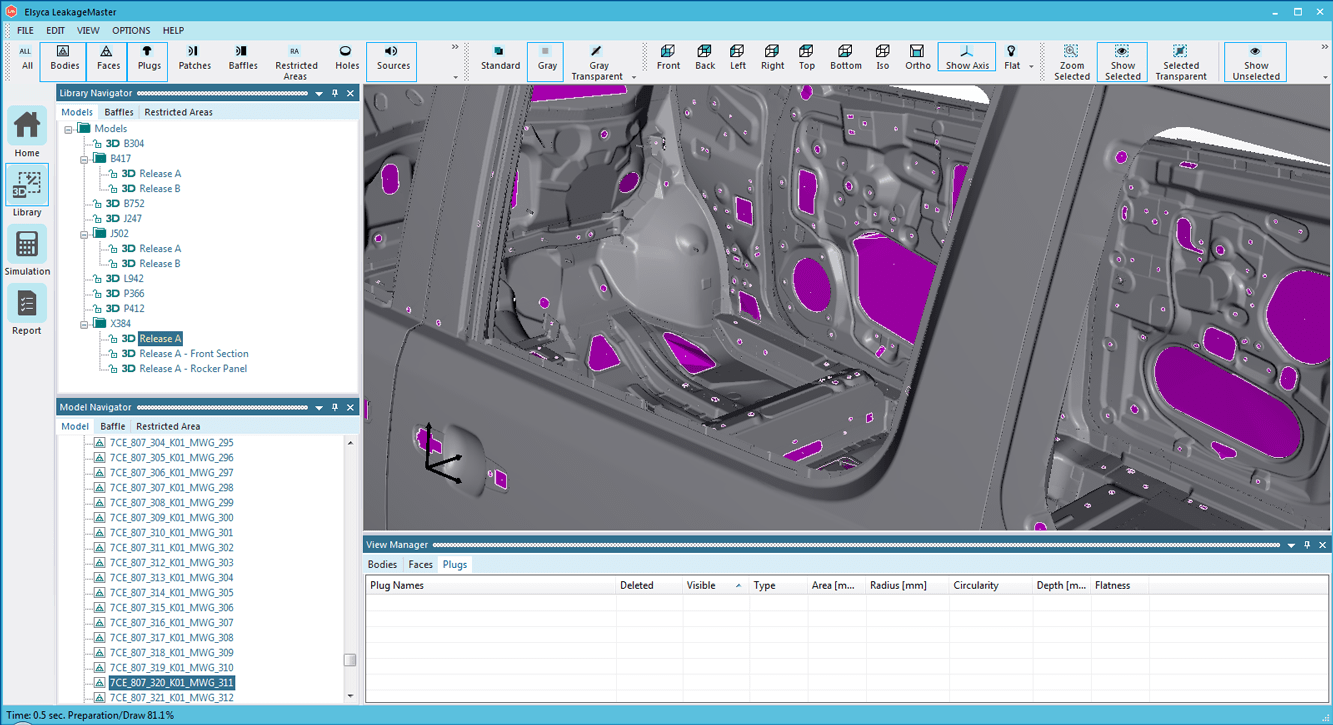
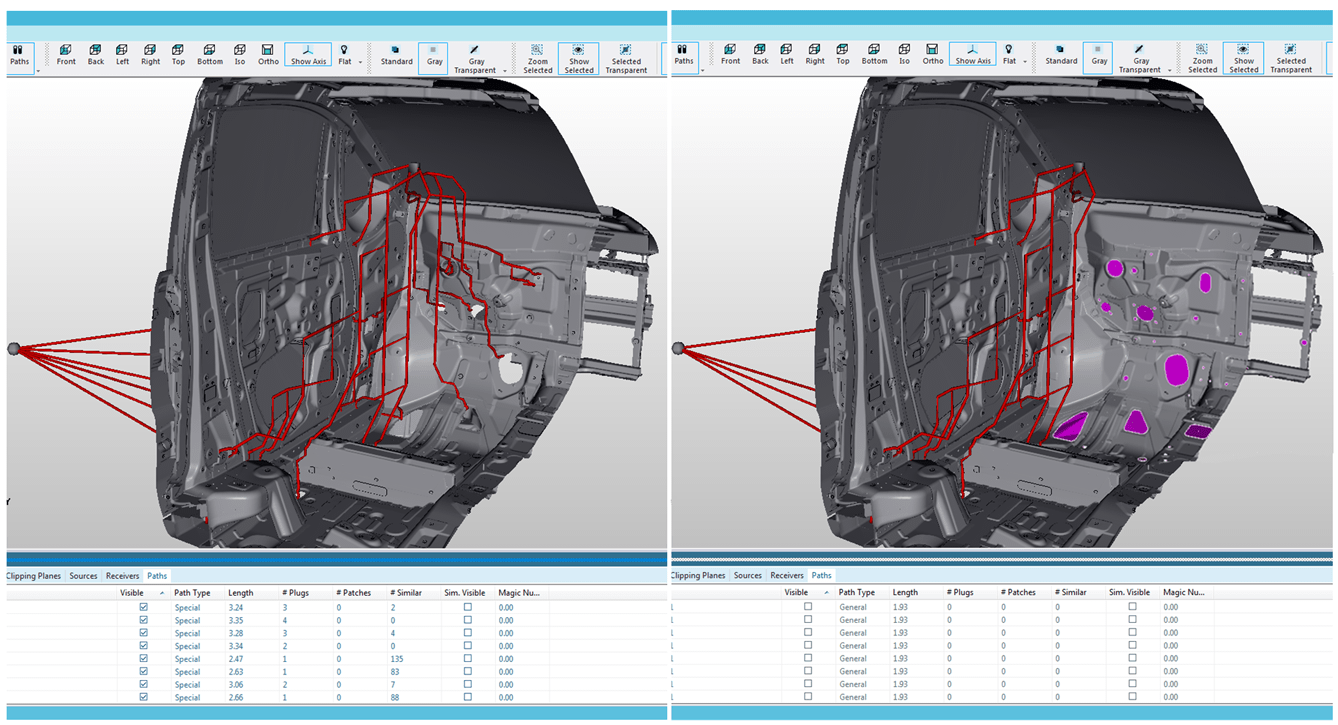
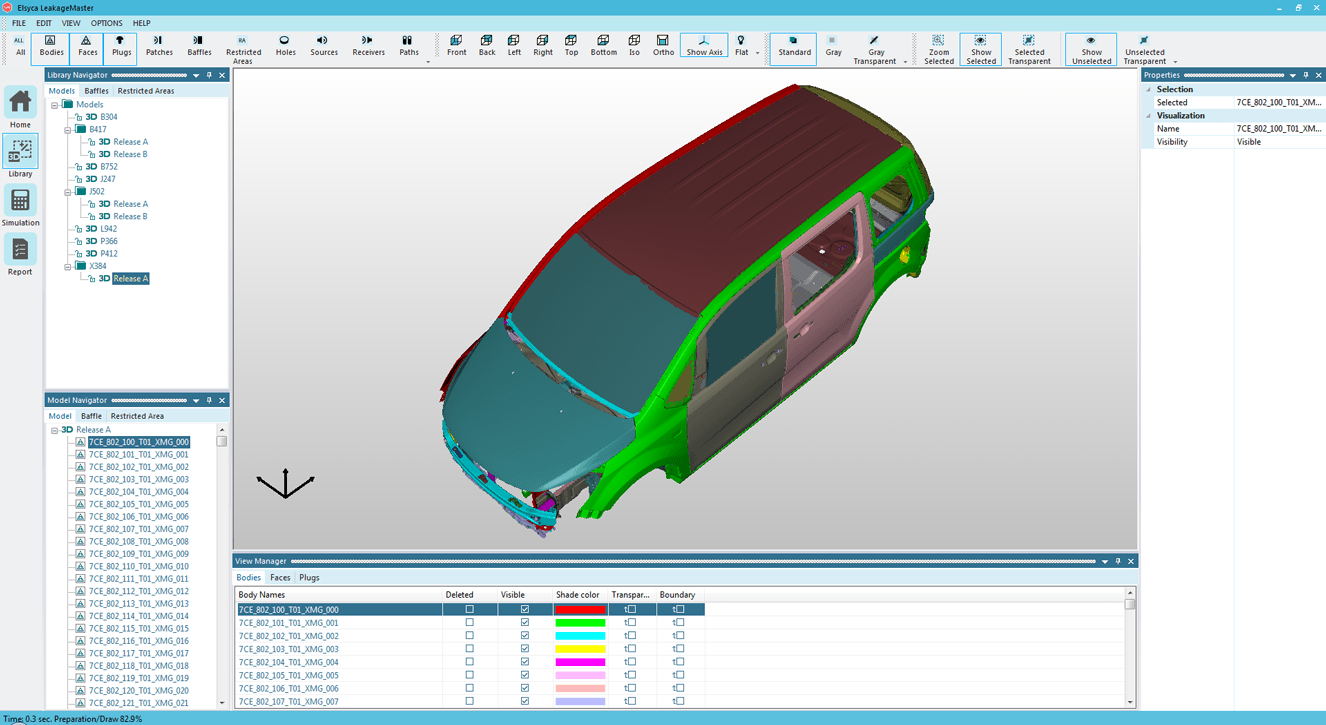
Latest news: Prime feedback from Volkswagen AG on Elsyca LeakageMaster
Volkswagen AG was the initiator for the development of Elsyca LeakageMaster and has been a source of inspiration for continuous improvement.
Volkswagen AG was also among the first to test a pre-release version of Elsyca LeakageMaster 2016.
Going from the full body-in-white CAD model to simulation results in less than 1 day, Volkswagen AG was very pleased and impressed with the new import and pre-processing tools. Also the embedded “smart solutions” for custom designing sealing measures were very much appreciated by Volkswagen, together with the intuitive and user-friendly graphical interface .
But perhaps the most enjoyable feedback of all was:
“It is fun to work with the new Elsyca LeakageMaster”.
User Case: Raffel, Knut – Volkswagen AG (Acoustic department)
“Virtual fog test” for identification of acoustic leakage
“The leak tightness of the body-in-white (BIW) is an important element for a good sound insulation of the passenger compartment of a vehicle. By applying sealing measures in the sheet metal structure such as plastic baffles and plugs, direct airborne sound paths are avoided or at least drastically reduced. This is crucial for a good acoustic basic design of a BIW. The common practice to date is to examine the acoustic leakage of prototypes and pre-series vehicles by means of ultrasound or smoke tests. This procedure provides important information, but only at a late stage of the vehicle development and also has the disadvantage that the trajectories of the sound propagation are unclear in many cases.
Therefore, Volkswagen has developed in cooperation with Elsyca a simulation technology to find conceptual errors on the basis of CAD data and to evaluate countermeasures in an early stage of the vehicle development process. The result is a software-based analysis of the geometric body structure without costly physical approaches to identify possible leakage."


